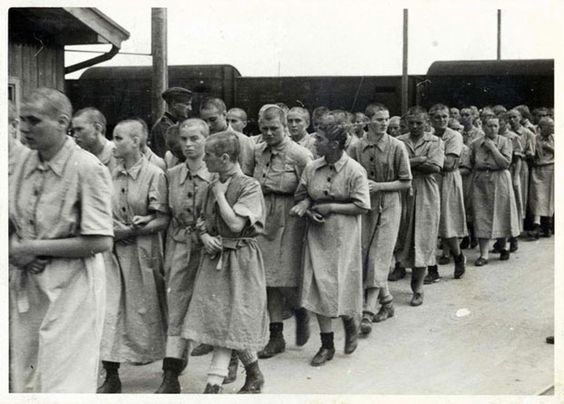
Rudolf Hoess (Rudolf Höss) was the architect and commandant of the largest killing center ever created, the death camp Auschwitz, whose name has come to symbolize humanity’s ultimate descent into evil.

Höss joined the Nazi Party in 1922 and the SS in 1934. From 4 May 1940 to November 1943, and again from 8 May 1944 to 18 January 1945, he was in charge of Auschwitz where more than a million people were killed before the defeat of Germany. He was hanged in 1947 following a trial in Warsaw.

On 1 May 1940, Hoess was appointed commandant of a prison camp in western Poland. The camp was built around an old Austro-Hungarian (and later Polish) army barracks near the town of Oswiecim; its German name was Auschwitz. Hoess commanded the camp for three and a half years, during which he expanded the original facility into a sprawling complex known as Auschwitz-Birkenau concentration camp.

After visiting Treblinka extermination camp to study its methods of human extermination, Hoess, beginning on 3 September 1941, tested and perfected the techniques of mass killing that made Auschwitz the most efficiently murderous instrument of the Final Solution. He improved on the methods at Treblinka by building his gas chambers ten times larger, so that they could kill 2,000 people at once rather than 200. He commented: “still another improvement we made over Treblinka was that at Treblinka the victims almost always knew that they were to be exterminated and at Auschwitz we endeavored to fool the victims into thinking that they were to go through a delousing process”.

Hoess experimented with various methods of gassing. According to Eichmann’s trial testimony in 1961, Hoess told him that he used cotton filters soaked in sulfuric acid in early killings. He later introduced hydrogen cyanide (prussic acid), produced from the pesticide Zyklon B. With Zyklon B, he said that it took 3–15 minutes for the victims to die and that “we knew when the people were dead because they stopped screaming”.
In the last days of the war, Hoess was advised by Himmler to disguise himself among German Navy personnel. He evaded arrest for nearly a year. When he was captured by British troops on 11 March 1946, he was disguised as a farmer and called himself Franz Lang. His wife had told the British where he could be found, fearing that her son, Klaus, would be shipped off to the Soviet Union, where she feared he would be imprisoned or be tortured. After being questioned and beaten (Hoess’s captors were well aware of his crimes), Hoess confessed his real identity.
During his trial in Poland, while never denying that he had committed crimes, he contended that he had only been following orders. He had no illusions about the fate that awaited him. To the end, Hoess contended that, at the most, a million and a half people had died at Auschwitz, not 5 or 6 million. At the end of the trial, he requested the court’s permission to send his wedding ring to his wife. Hoess was sentenced to death by hanging on 2 April 1947. The sentence was carried out on 16 April immediately adjacent to the crematorium of the former Auschwitz I concentration camp. The gallows constructed specifically for that purpose, at the location of the camp Gestapo.

Rudolf Hoess was led out punctually at 10 a.m. He was calm. With energetic steps, almost strutting, he walked along the main camp street. Since his hands were handcuffed behind his back, the executioners had to help him climb onto the stool placed above the trapdoor. A priest, whose presence had been requested by the condemned man, approached the gallows. A prosecutor read out the sentence. The hangman placed the noose on Hoess’s neck, and Hoess adjusted it with a movement of his head. When the hangman pulled the stool from under the former commandant, his body struck the trapdoor, which opened, leaving Hoess hanging.

The priest began to recite the prayer for the dying. It was 10:08 a.m. A physician pronounced Hoess dead at 10:21. His remains were probably cremated.

Reblogged this on History of Sorts.
LikeLike